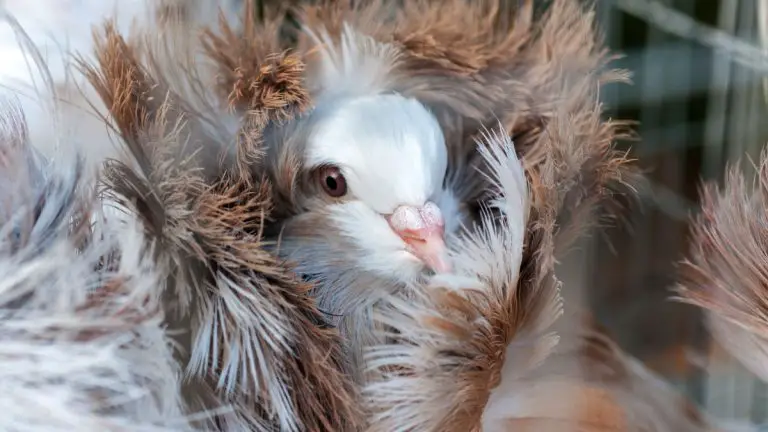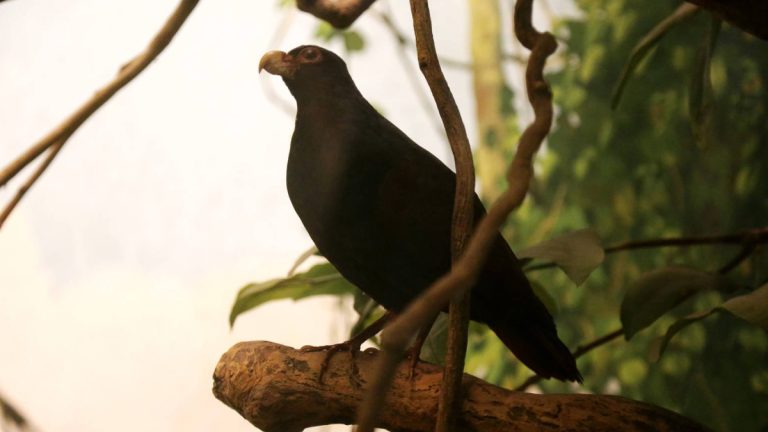Common Wood Pigeons 101: Physical Characteristics, Habitat, Behavior, and Relationship with Humans
Common wood pigeons, scientifically known as Columba palumbus, are highly popular among bird enthusiasts for several reasons. They are far larger than the urban pigeons, with distinctive physical features, including a plump body, broad wings, and grayish-blue feathers with white patches.
Also, hearing the males’ low-pitched and rhythmic coos that sound like “hoo-hoo-hoo-hoo” is a privilege for many pigeon lovers.
This creature offers fun and education to people involved in backyard birding. It assists in generating a deeper understanding of ecological conversion by means of dispersing plant species and contribution to biodiversity.
Again, studying wood pigeons’ social behavior and habitat in urban settings provides insight into their adaptability. And the process of living alongside humans and the challenges they face in the city environment. In short, the study assists in bird-friendly urban planning.
Interesting, right? Here, we detail the habits, physical characteristics, needs, etc.
Common Wood Pigeon Physical Characteristics
In this section, we discuss the basic physical characteristics of woodpigeons while exploring the available variations and adaptability criteria.
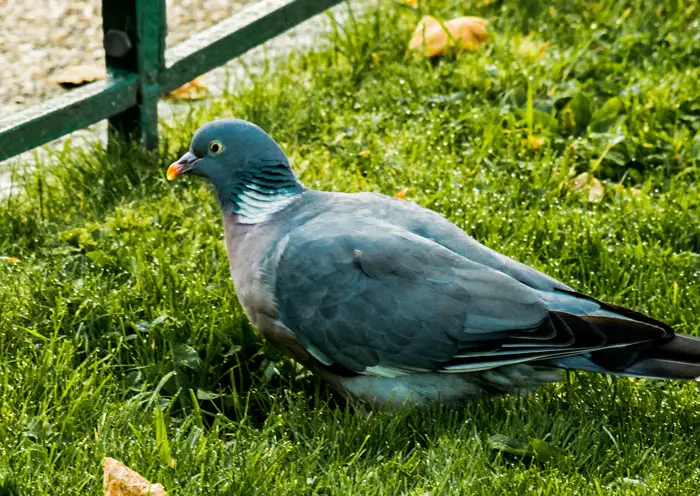
Physical Orientation
Below are the details about this bird’s size & shape, plumage, and markings.
Size & Shape
In general, an adult wood pigeon can grow up to 40 centimeters with a wingspan of a maximum of 80 centimeters. They have a distinctive appearance, with a plump, round body and short neck. The common wood pigeons weigh around 300 to 600 grams.

Plumage
Common wood pigeons are ornamented with stunning plumage that is mostly grayish-blue. Also, during their flight, white patches on their neck and wings become visible.
Identification Marks
With the white patch and wing bands, Common Wood Pigeons have some more markings on their bodies, making them unique. They have small, dark beaks and dark eyes.
Additionally, their tail is decorated with a distinctive black and white striped pattern on their tail feathers, which is visible when they fan their tails.
Wood Pigeon Variations

In general, there are six variations of this species that can be found worldwide. The following is the detail:
- Maderial wood pigeons: Extinct category; visible in Portuguese. Their color is mostly gray with a neck ring.
- North African Wood Pigeons: Can be seen in the regions of North Africa; Tunisia, Morocco, Algeria, etc. This subspecies is mid-size with a length of 28 centimeters.
- Iranian Wood Pigeons: Visible in the North and West parts of Iran. The 40sm long body is ornamented with grey-blue head and neck, and a pale pinkish-grey breast.
- European Wood Pigeons: Available in Iraq and Siberia during the summer season. The differential physical characteristic is a while line on the wings.
- Azores Wood Pigeons: Can be seen in the islands of the North Atlantic Ocean. These wood pigeons are naturally decorated with white neck markings with purple and light-glittery green marks on the breast.
- Asian Common Wood Pigeons: Visible in South Asia. Wings are whites at the edges and there are pinkish patches on the lower part of the throat.
Environmental Adaptability of Common Wood Pigeons

With the passage of time, common wood pigeons have developed several adaptations to survive in various environments and climatic conditions.
- Insulated Features: They have insulated features for protection against cold weather.
- Digestive System: The digestive system supports the processing of food later. It is substantially useful in extreme weather and travels a longer distance.
- Flight Muscles: They have strong flight muscles, which allow wood pigeons to migrate to faraway locations in the winter.
- Special Characteristic: They know how to use human resources to enable survival in urban settings.
- Dietary: Common wood pigeons have a wide dietary range, including a variety of seeds, grains, fruits, and insects. It makes them survive in different habitats.
Habitat and Behaviour of Common Wood Pigeons

Let’s discuss the habitat first, followed by pigeon behavior characteristics.
Common Wood Pigeon Habitat
Due to being a highly adaptable species, common wood pigeons nest in various habitats within their range. In rural areas, they inhabit agricultural fields, forests, scrublands, etc. And live on various seeds, nuts, berries, wheat, and plant leaves.
Amazingly, this genre of pigeon also inhabits the cliffs and rocky areas along the coasts, where they survive by eating seaweed, mollusks, etc. Not to mention, common wood pigeons also nest in urban parks and gardens.

Common Wood Pigeon Behavior
Common wood pigeons display some interesting behaviors. Here is an overview.
Feeding behavior
This bird category is basically granivorous. Here, the pigeon diet includes seeds, grains, fruits, berries, and some insects.
Nesting behavior
Common wood pigeons usually build their nests in trees or shrubs, using twigs and small branches. They use single nests for subsequent breeding seasons.
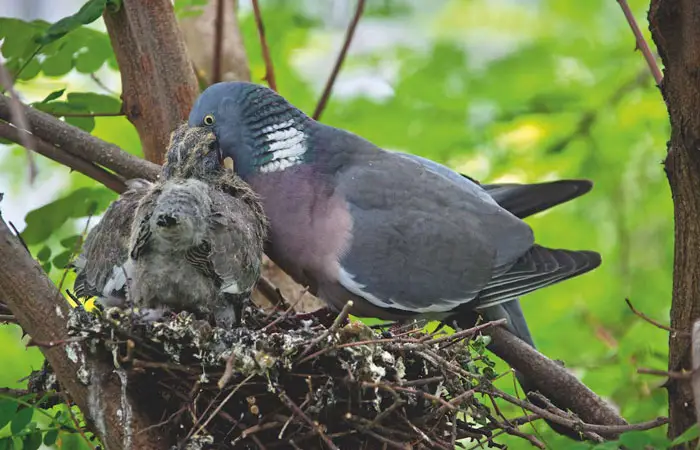
Courtship display
During courtship, common male wood pigeons display their elegance by taking complex flights—they fly up and then glide down in a circular motion. Also, to attract their counterparts, they make a “wooh-wooh” call.
Chasing the female, puffing chest feathers, bobbing heads, etc., are also the signature marks of common wood pigeons’ courtship.
Migration
During winter, common wood pigeons’ migratory patterns make them fly far to find suitable breeding places.
Threat displays
Common Wood Pigeons puff out their feathers and spread their wings in case they feel threatened or intimidated. Here, some may generate a clapping sound with their wings as a warning signal.
Role of Common Wood Pigeons in Ecosystem
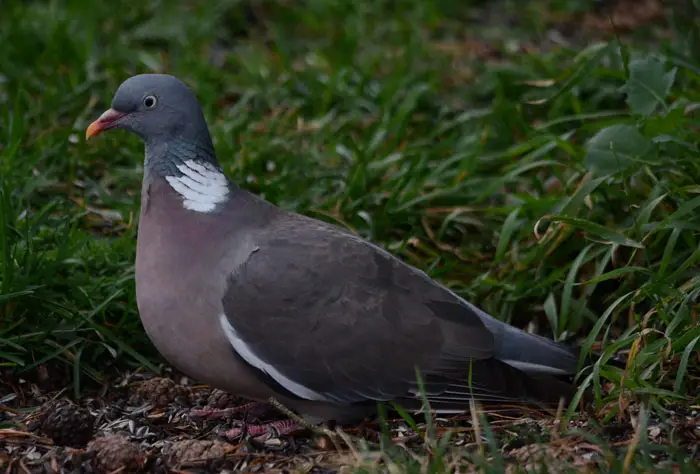
Common wood pigeons take a significant part in impacting the ecosystem. Understanding their roles in the ecosystem will help us understand their conservation importance.
- Disperse seeds: Common wood pigeons disperse the seeds through their droppings.
- Others’ Food Source: They are an important food source for animals like foxes, eagles, raptors, domestic cats, etc.
- Attitude to Other Birds: In consideration of bird ecology, this pigeon genre somewhere shows a competitive attitude toward other birds and sometimes goes with mutualistic relationships.
Relationships with Humans

How do common wood pigeons interact with humans? And how are humans supporting the population growth of these pigeons? Let’s explore here.
Common Wood Pigeon-Human Relationship
Common wood pigeons have been humans’ trusted companions since the early ages of civilization. And this context is visible through the history, culture, and folklore of various societies. In some cultures, they are considered symbols of love, peace, and fertility.
Also, there are numerous inclusions of common wood pigeons in art, literature, and religion, signifying their solid bonding with humans. Historically, like other pigeons, common wood pigeons were also used for communication: sending and receiving massages.
Additionally, in some areas, particularly in Europe, hunting common wood pigeons is a fun and adventurous game. However, this hunting activity is now banned in various places to ensure the common wood pigeon species’ existence.

Another major contribution of the common wood pigeon to human civilization is providing enjoyment to bird lovers. Petting wood pigeons is a fascinating hobby for many people. They used to keep these birds in their backyard and experience superior joy by watching their activities and nurturing them.
In addition, the city population also substantially tolerates the presence of pigeons. City dwellers, in general, feed the free wood pigeons for their own enjoyment, supporting population growth and depicting acts of kindness.
Negative Impacts of Humans’ Behavior on Common Wood Pigeon Populations
Like many creatures on earth, the common wood pigeons population also should be taken care of to restrict the possible disappearance. Intentionally or unintentionally, various human acts are negatively impacting its populations. Here, we answer the how-related questions.
Habitat Destruction
To support the progress of human civilization, industrialization is a core concern. But the lands are limited, and the number of humans is growing, which leads to deforestation, i.e., the destruction of the pigeons’ habitats.
Changes in Climate
As we already know, human activities are harming the natural climatic setting. Associated changes in temperature and precipitation patterns affect the availability of food and water for the pigeons. Furthermore, the timing of seasonal migration is forced to shift, disrupting population growth.
Pollution
Polluted air and water kill the pigeon as a direct impact. At the same time, the consumption of contaminated food, water, and air indirectly affect the breeding process of the common wood pigeon.
Hunting
Hunting of wood pigeons for fun and adventure is another direct negative impact on its population.
A List of Conservation Efforts

So far, bird lovers, governments, non-profit organizations, etc., are trying their best to ensure the survival of common wood pigeons. Some of the core efforts are listed below.
- Conservation of habitats: Habitat conservation by means of reforestation and restoration of degraded habitats. It restricts the extinction of this birds.
- Hunting: Strict regulations on hunting. Killing this bird is regulated by environment and wildlife protection related laws.
- Research Organizations: Research and monitoring through various non-profit research institutions to have more understanding of all the aspects.
- Generating Awarness: Educating the public about the importance of common wood pigeons for having a balanced ecosystem. It eliminates the chances of human’s harmful acts against them.
- Bird Protection Organizations: International bird conservation organizations’ collaborative efforts to protect this species from going extinct.
Interesting Facts about Common Wood Pigeons
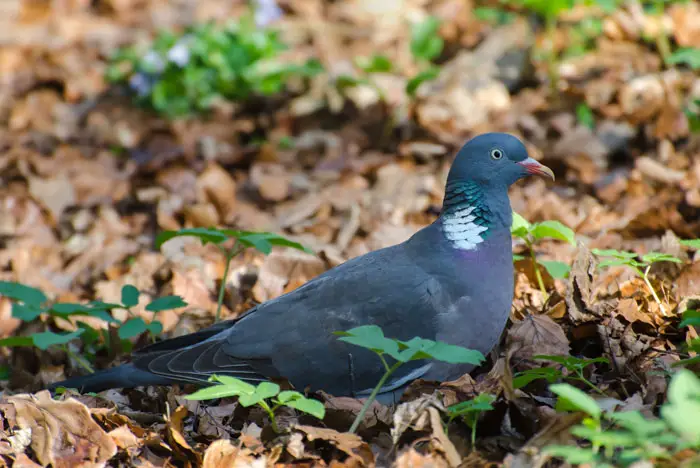
Here is a list of fun facts about common wood pigeons.
- The crop capacity is astonishing; it can hold 1,000 pieces of wheat at a time.
- Common wood pigeons damage a significant amount of crops per year in the UK, valued at £3 million.
- Squabs are fed with pigeon milk, a liquid from the stored food at the crop.
- The egg-hatching period is approximately 17 days, and squabs can fly after 35 days.
Last Words
Common wood pigeons are fascinating birds with unique physical characteristics and behaviors that make them a delight to observe. The pigeon habitats range from woodlands to city gardens. The pigeon-human relationship is complex; humans admire them for their beauty and hunt them for sport or food.
We need to appreciate these birds and respect their place in the ecosystem. We only can do this by studying this bird behavior and understanding their diet and habitat preferences. We can work to protect common wood pigeons and ensure that they continue to thrive for generations to come.





